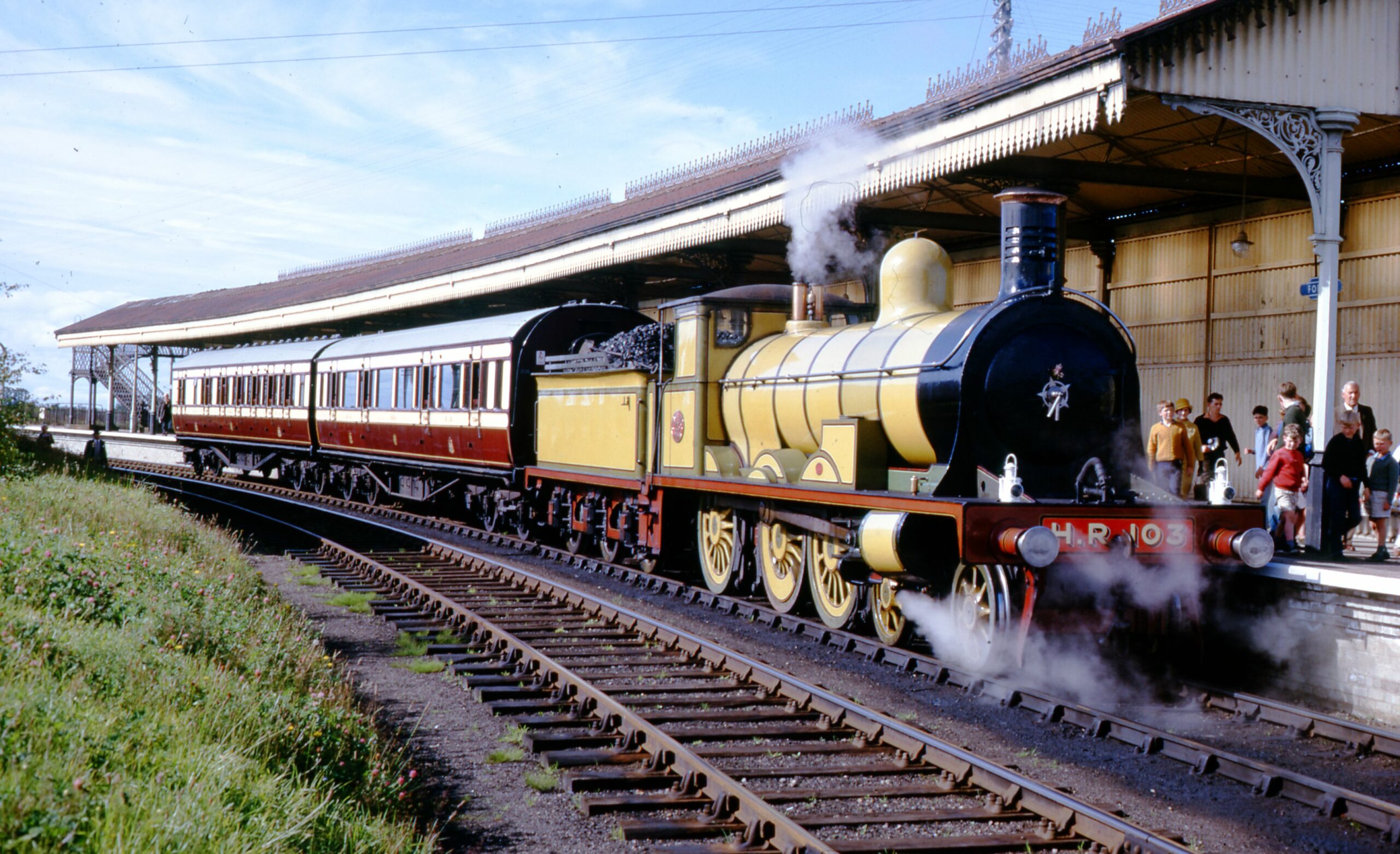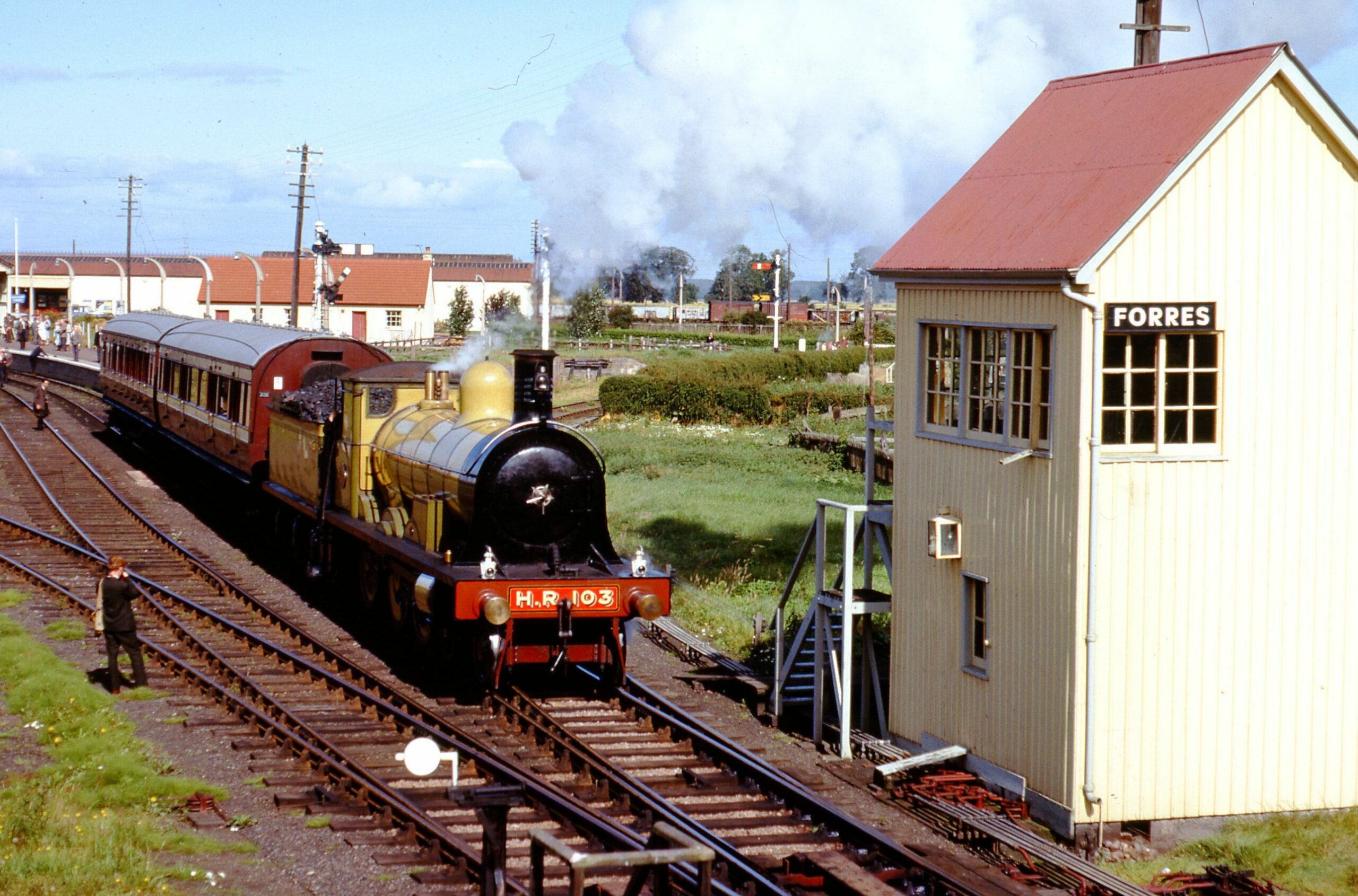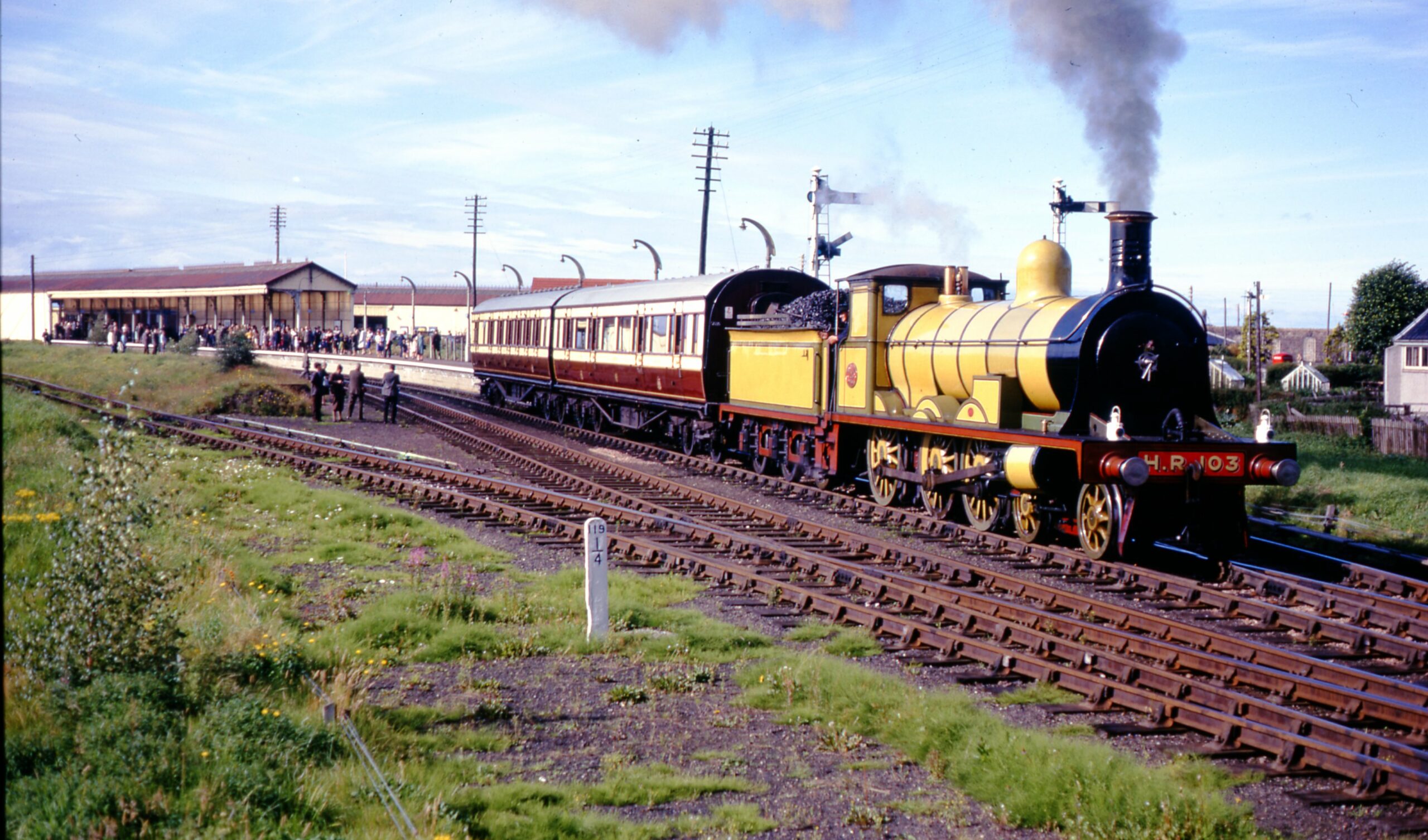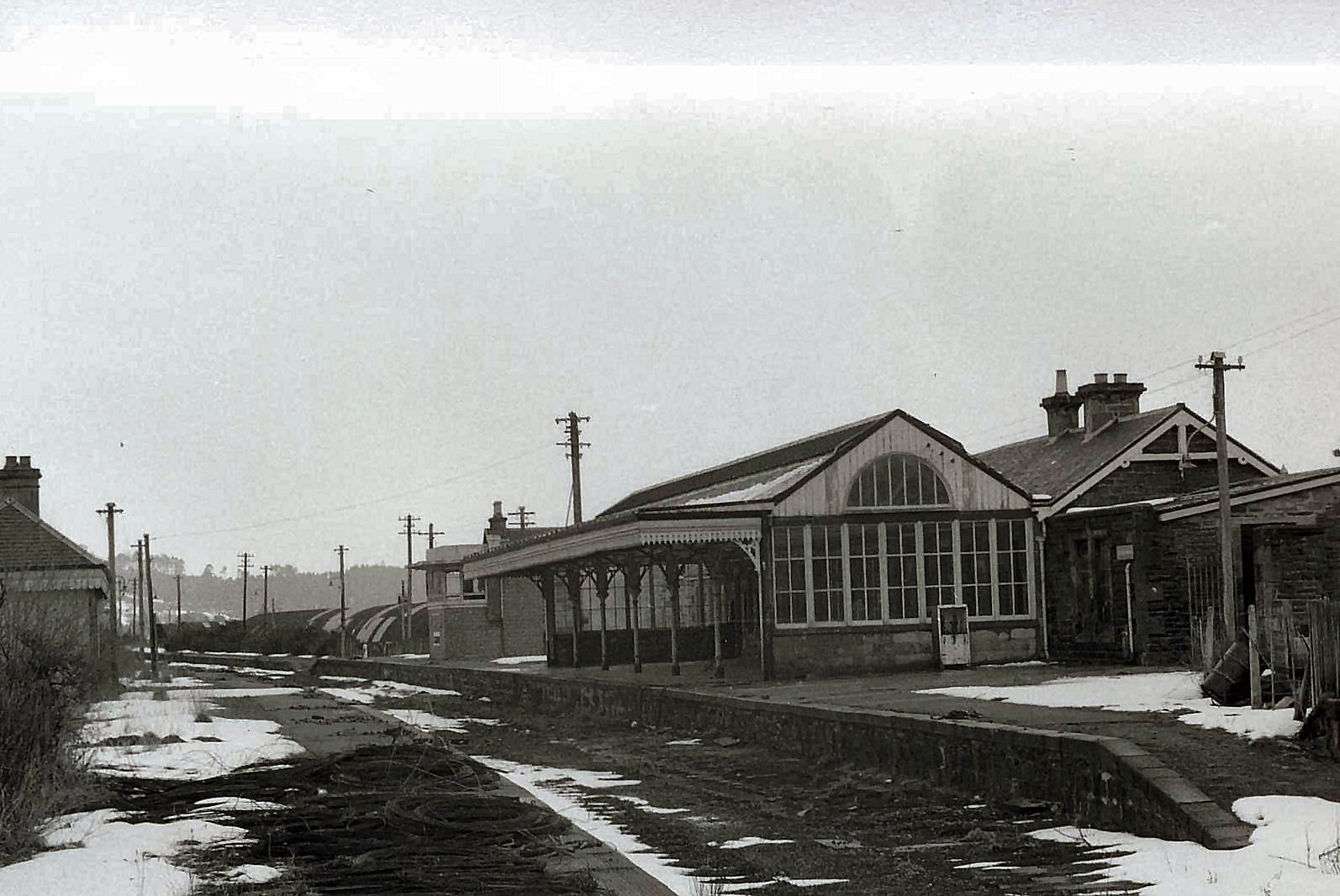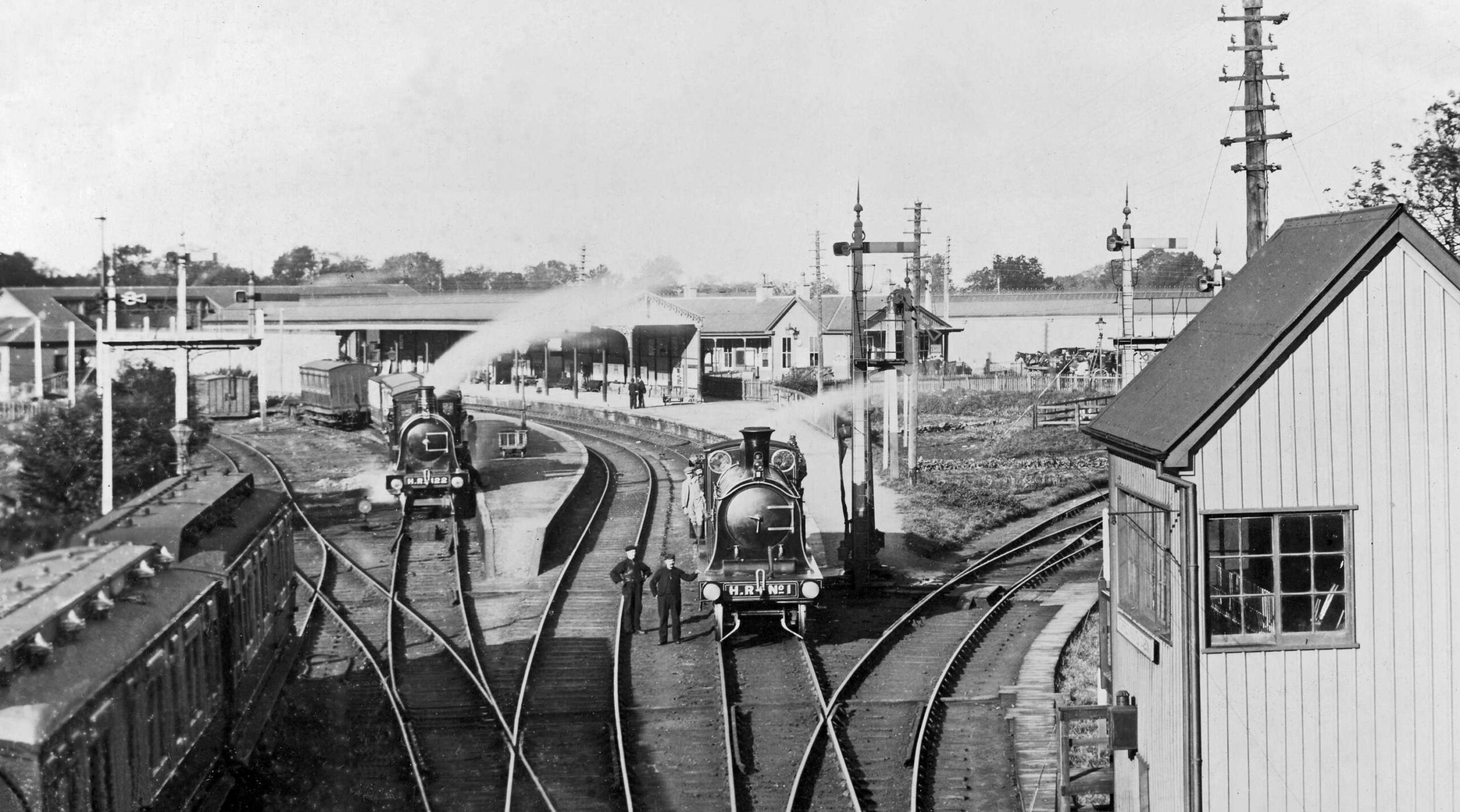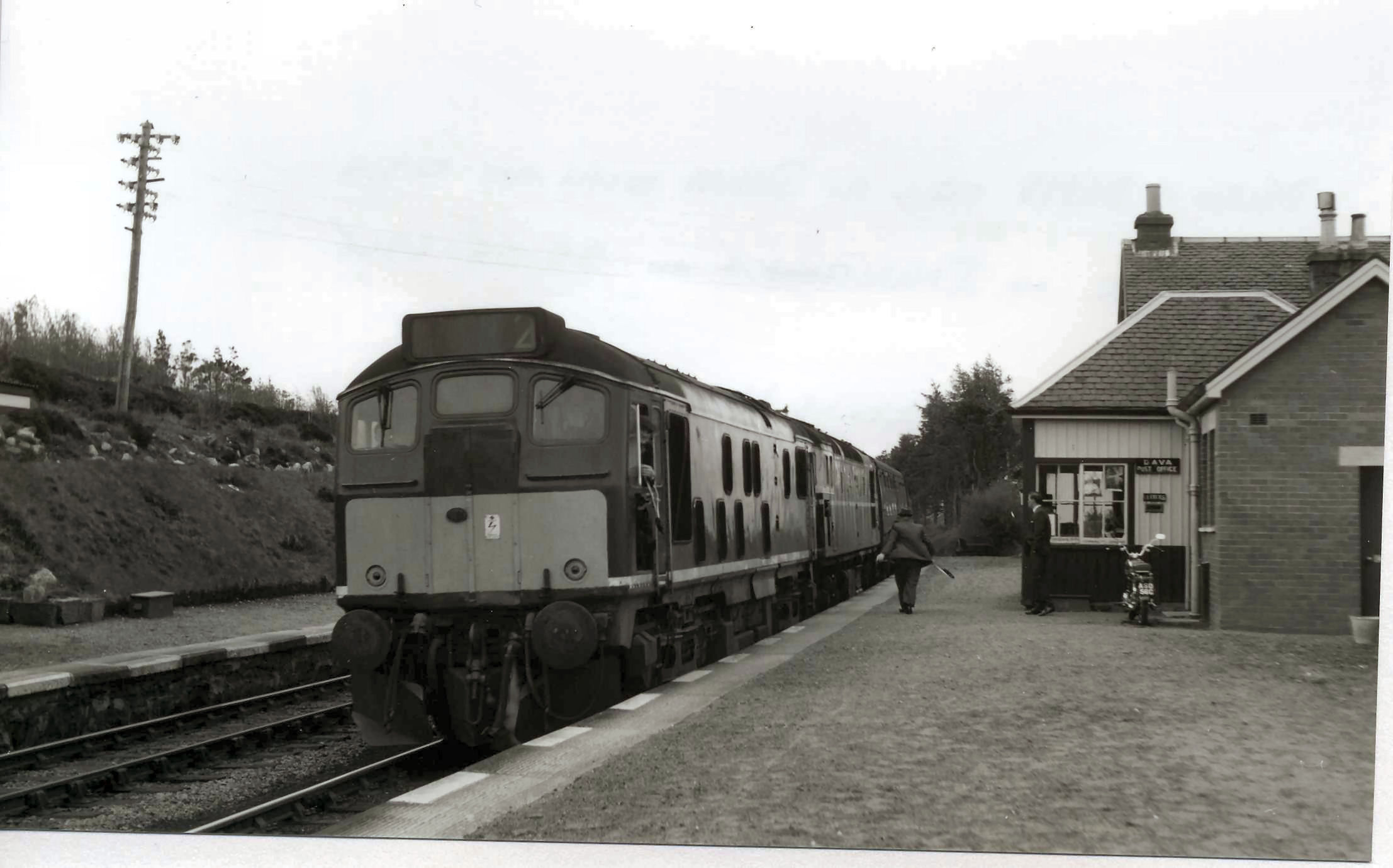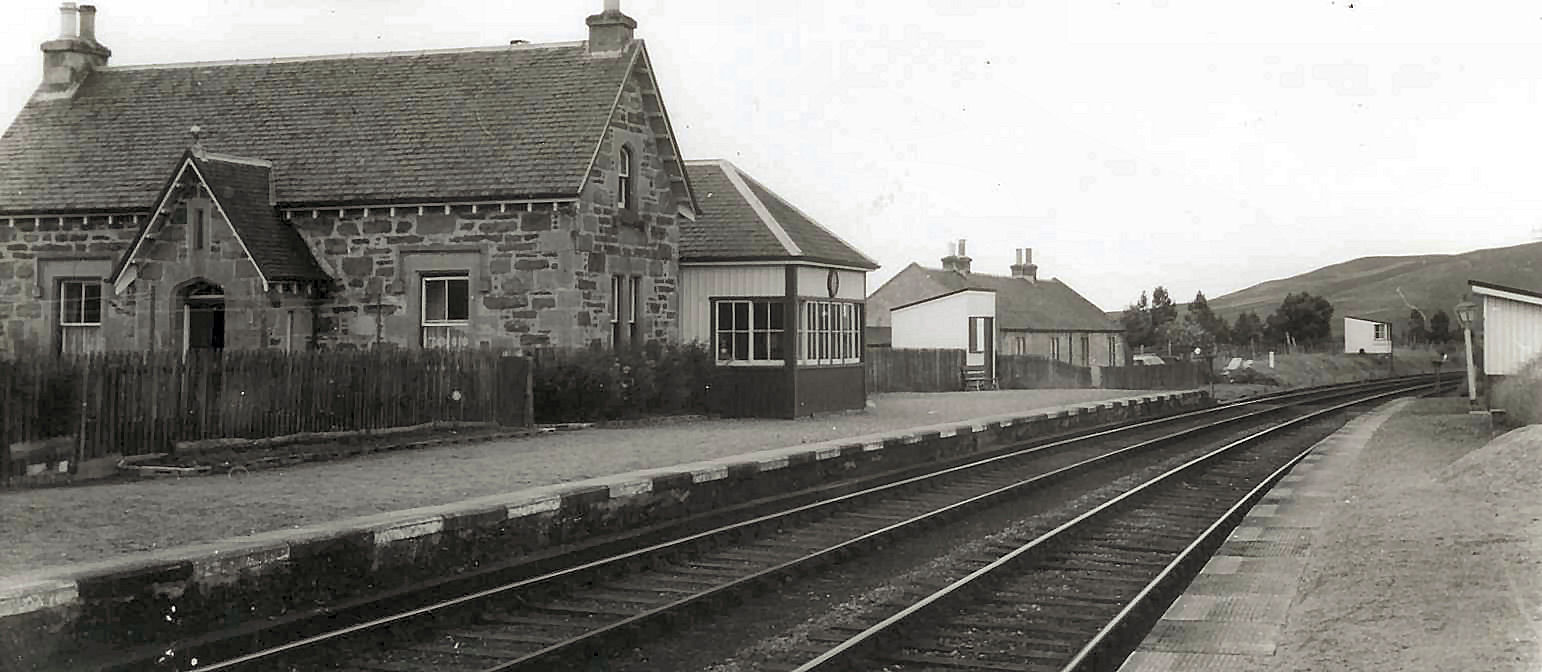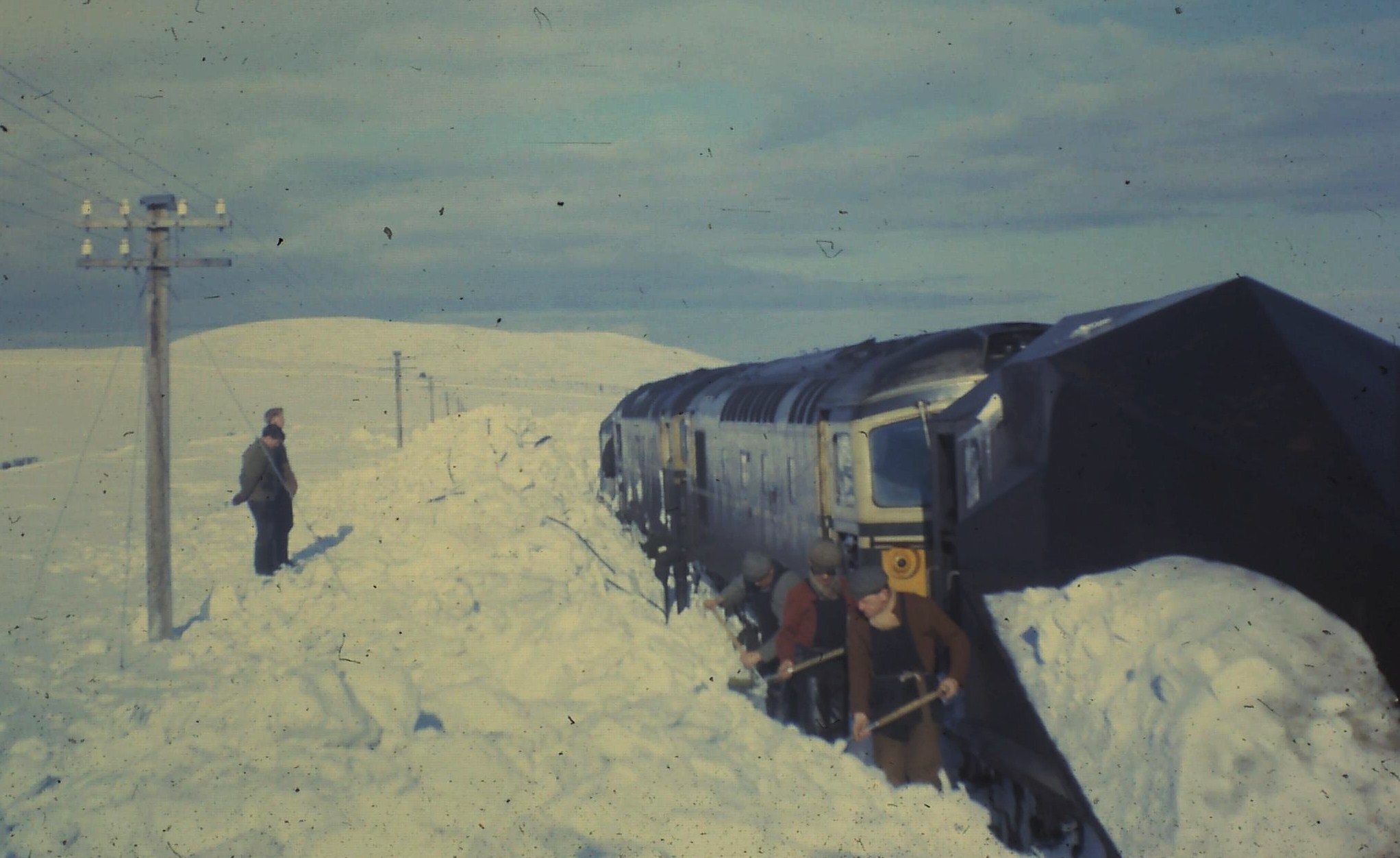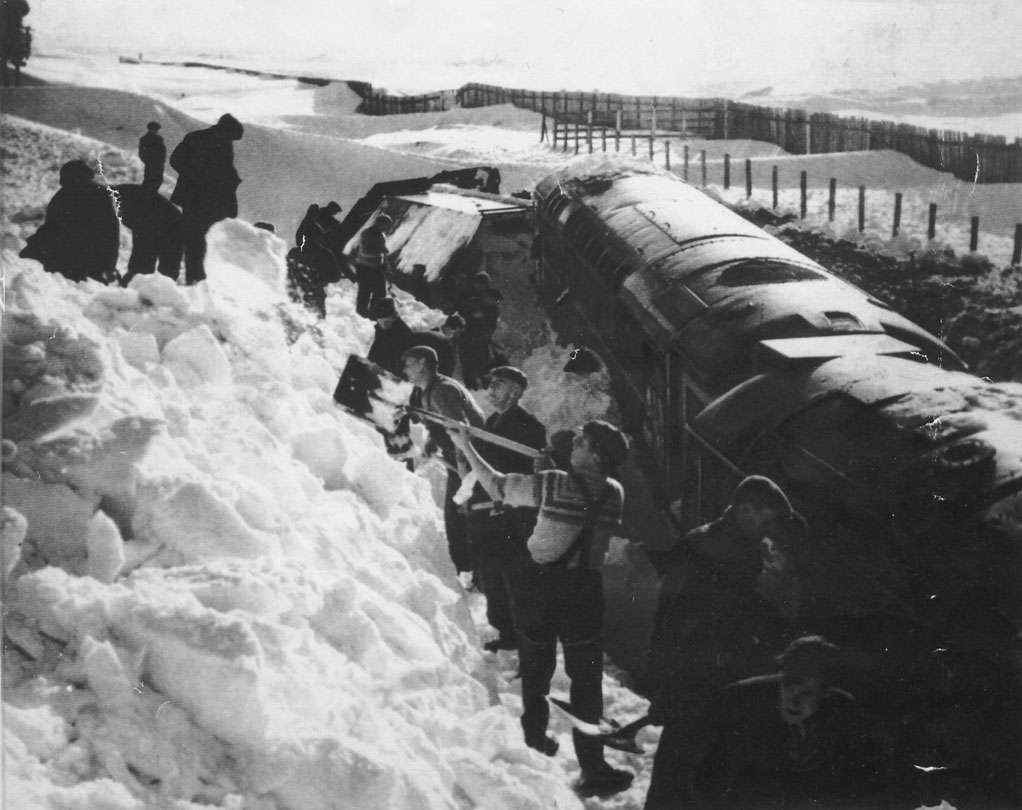The Inverness & Perth Junction Railway
Background
Just over 20 years after George Stevenson’s Locomotion No 1 ran on the Stockton and Darlington Railway on 27 September 1825 heralding the start of the Railway Construction boom, the Inverness & Perth Junction Railway scheme was submitted to Parliament but rejected because of engineering difficulties. Nevertheless the scheme was revived in 1853, but only to the extent of building the line from Inverness to Nairn. This section was opened on the 5th October, 1855, and later extended to Keith, linking up with the Great North of Scotland Railway’s route out of Aberdeen on 18th August, 1858.
Highlanders continued to work for a direct route from Inverness to Perth, and the Inverness & Perth Junction Railway routed via Forres and over Dava Moor finally opened on 9th September, 1863. This intense period of building continued until 1865 with numerous lines being constructed to the north of Inverness. Take-overs by, and amalgamation of, the main players, viz the Inverness & Perth plus the Inverness & Aberdeen Junction railways led to the formation of the Highland Railway around this time. Joseph Mitchell was the engineer for all these lines.
Building the railway
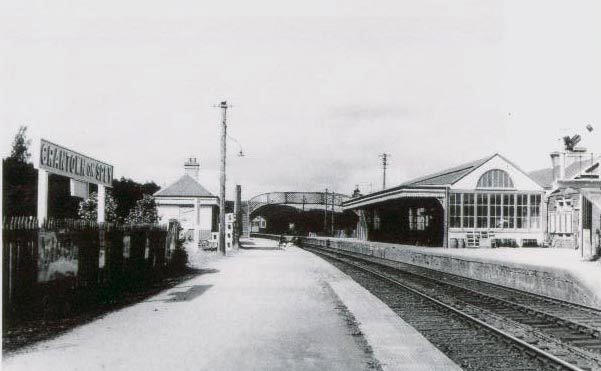
on 14th August 1950
The first turf to start the construction of the 103 miles between Dunkeld and Forres was cut on 17th October 1861. The 36 miles from Forres to Aviemore were opened on 1st June 1863, whilst the whole route was opened for traffic on the 9th September 1863 having taken less than 1 year and 11 months to construct. Even in those busy railway years this was an extremely short time for works of such magnitude. There were 9 contractors involved and cost was £8,860 per mile. (The original estimate being £8,117 per mile.)
The railway required the construction of eight viaducts, 126 bridges over burns and 119 road bridges. The most notable engineering feature of the line is the Divie Viaduct, having a total length of 477 feet (145 metres). It crosses the River Divie on seven arches of 45 foot (14 metres) width span each and cost £10,231 to build. The highest embankment at 77 feet (23 metres) is by Rafford which required 208,000 cubic yards (164,000 cubic metres) of rock and earth to build. Despite rising to 1050 feet (320 metres) above sea level on Dava Moor no gradient on the original route exceeds 1 in 70 along the whole length. The steepest gradients are on the rise from Forres to Dava.
Development of the railway
The object of the line’s promoters was to move the produce of the Moray Firth and its shores – sheep, cattle and fish to the south. The railway reduced the journey time for livestock from four to six weeks down to one day! Four years after opening the line traffic had increased to the point where 21,000 sheep were transported in one week. Dunphail station was the major loading point for cattle, boasting up and down lines and a goods yard. It is claimed that at the time Dunphail had the longest station platform in Britain.
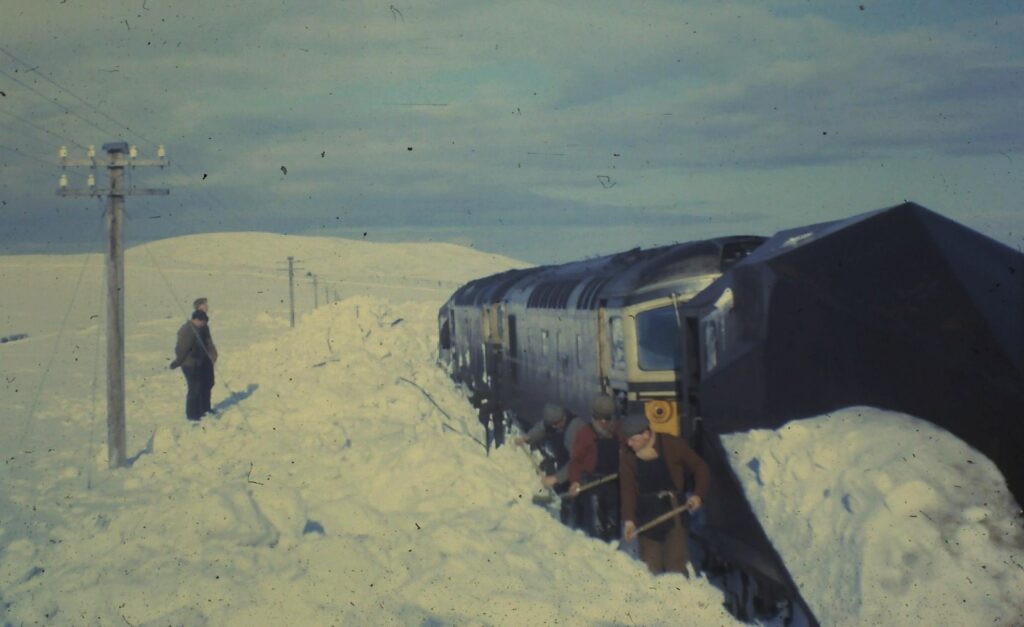
Winter Challenges
The railway crosses high mountains and open moorlands. Snow and winds with the ensuing drifting was an ever present danger. The artic winter of 1880-81 was particularly memorable. On 17th December a train became snowbound south of Dava station and had to be abandoned. The passengers managed to reach Dava station before the storm increased further. The train was completely buried, and when it was located after the storm, the snow was 60 feet (18 metres) above the coaches. An up train, carrying passengers and cattle was also caught on the other side of the station. Whilst the passengers escaped, the cattle refused to leave the shelter of the trucks, and perished by suffocation. A relief train sent to help also became stuck. There were several other storms that winter but none so severe.
Until the Inverness to Perth line over Slochd Summit opened in 1898, the main line to London was via Forres and Grantown over Dava Moor. The line became less significant after 1898, but goods and passenger trains ran through both world wars though traffic decreased after the 1950s. Sadly, the line did not survive the Beeching axe and the last trains ran in 1965. Over the next few years, the rails were lifted, land returned to the original owners and the trackbed became steadily overgrown.
Books about the Highland Railway
The information on this page is taken from:
- Reminiscences of My Life in the Highlands, Volume 2, by Joseph Mitchell, published in 1884 by the author and reprinted by Lewis Reprints Ltd for David & Charles Reprints in 1971.
- The Highland Railway by H A Vallance, 4th edition, ISBN 0 946537 23 2, published in 1985 by David St John Thomas.
- The Last Trains (5) North of Scotland, ISBN 0 906606 08 X, published by Moorfoot Publishing.
- Highland Railways: People and Places, ISBN 1 85983 453 1, by Neil T Sinclair and published by Breedon books.
Copies are held in the local Forres library.
Other sources of information
The Highland Railway Society has a brief history of the early development of railway links to Inverness and beyond. They have also published a number of books including a biography of William and Murdoch Paterson written by their great grand niece Anne-Mary Paterson. The Paterson brothers were responsible for much of the construction of the Highland Railway network. The book may be purchased directly from the society for £9.90 plus £1.60 postage.
Joseph Mitchell was the civil engineer who designed, surveyed and supervised the building of the 103 mile stretch of railway from Forres to Dunkeld The Virtual Vault of the Scottish Archive Network includes an account of the construction of the railway by Joseph Mitchell.

